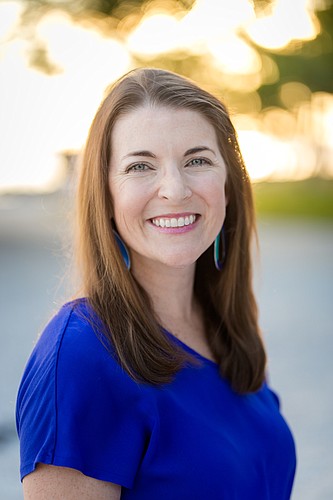- November 22, 2024
-
-
Loading

Loading

A seizure in the middle of the night left Jessica Patella with a lot of questions. After the blood work and medical test came back normal, doctors couldn’t tell her why it happened. But she knew it wasn’t normal.
Shortly after, she decided to go gluten-free and cut processed sugar out of her diet.
“I took them both out at the same time, and I was really able to keep at it because I was like, ‘I don’t want to go through [that],’” she said. “I don’t want to have a seizure again.”
For the next two-and-a-half years, Patella said she wasn’t human. She followed a gluten-free diet so strictly she felt estranged from the world. But after she and her husband sold everything they owned in North Carolina and traveled Europe for a year, she found she could enjoy some food that she avoided like the plague. Bread in France was OK, but pasta in Italy left her feeling the ill effects of gluten.
Gluten is found in wheat and related grains, including barley, rye and all their species and hybrid forms.
Patella says when she ingests gluten and sugar she feels congested and her emotions get off track. She feels foggy and depressed. When she keeps on track, she says her complexion is clearer, her eyes aren’t as puffy and she feels better overall.
“It’s kind of easier to keep on track when you can feel it, and I do think you have to be more aware of your body,” she said.
For Patella, a naturopathic physician and teacher at Sarasota Military Academy, knowing what foods to cut out wasn’t hard. Discovering all the recipes and consumer goods that contain gluten — some shampoos and cosmetics do — was a surprise. She ditched the gluten in food, but didn’t shy away from the shampoo and cosmetics.
For people considering a gluten-free diet, Patella recommends transitioning by eating gluten-free versions of their favorite foods and eventually moving to more whole foods and grains. Going gluten-free, she said, is easier now because of increased awareness.
“I think gone are the days where it’s like if it’s gluten-free it tastes like cardboard,” she said. “I mean, you can get some really good gluten-free foods that you wouldn’t be able to tell the difference.”
The first two weeks that Patella went gluten-free, she also cut out sugar and caffeine. She said she was miserable but stuck with it and started to feel better daily. She compares it to detoxing and says you have to listen to your body. She recommends trying gluten-free for at least a month before calling it quits.
And just because you eat gluten-free, it doesn’t mean you can’t have fun in the kitchen. Patella’s toddler daughter is also gluten-free, but they manage to enjoy some classics. Buckwheat blueberry pancakes are a household favorite. (See the next page for the recipe.)
“So you can still do those things and have fun in the kitchen with making gluten-free [food],” Patella said. “There are so many good cookbooks, so I would go to the bookstore and find one that has the foods you’re most interested in.”
(Makes four 5-inch pancakes)
Ingredients
1 cup Arrowhead Mills Buckwheat
1/2 teaspoon salt
1 teaspoon baking powder
1/2 teaspoon ground cinnamon
1 egg, beaten, or egg substitute
2 tablespoons melted butter
2 teaspoons honey
3/4 cup almond milk
1 teaspoon vanilla
1/4 cup frozen or fresh wild blueberries
Directions
Source: Jon and Jessica Patella